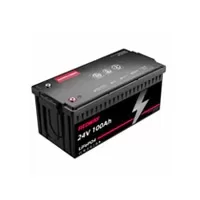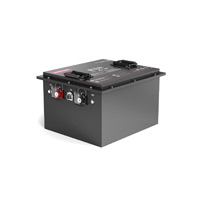Lithium batteries, the driving force behind our devices, are not without risks. Despite their convenience, there’s a potential danger – lithium battery fires. In this post, we’ll delve into the realm of lithium battery safety and uncover effective measures to extinguish these fires, providing essential insights for tackling this challenge.
Common causes of lithium battery fires
While lithium batteries offer efficient power, it’s crucial to understand potential risks, especially regarding fires. Let’s explore common causes behind lithium battery fires and essential precautions to ensure safe usage.
- Overcharging: Overcharging a lithium battery beyond its recommended voltage can lead to thermal runaway, causing the battery to overheat and potentially catch fire. Following proper charging guidelines is essential to prevent this hazard.
- Physical Damage or Puncture: Physical damage to a lithium battery, such as a puncture, can expose reactive chemicals inside. This exposure to oxygen may lead to heat generation and ignition. Careful handling to avoid damage is vital for safety.
- Improper Storage and Handling: Incorrect storage practices, like exposing batteries to high temperatures or direct sunlight, increase the risk of overheating and fire. Proper storage and handling, including avoiding extreme conditions, are crucial precautions.
- Manufacturing Defects: Internal short circuits due to manufacturing defects or poor quality control can trigger lithium battery fires. Choosing reputable brands with stringent quality measures minimizes the risk of defects.
Being mindful of these causes and adopting safety measures, such as proper charging, careful handling, correct storage practices, and choosing reliable brands, significantly reduces the potential hazards associated with lithium batteries.
What happens during a lithium battery fire?
Lithium battery fires pose severe risks, with unpredictable behavior and potential dangers. Understanding the dynamics of these fires is crucial for effective response and safety measures.
- Chemical Reaction and Gas Release: In a lithium battery fire, intense heat causes the breakdown of the electrolyte, releasing flammable gases like hydrogen and carbon dioxide. These gases contribute to the fire’s intensity, complicating the extinguishing process.
- Cell Rupture and Explosions: Ongoing fires can lead to the rupture of battery cells, causing additional explosions. The heat generated by these explosions exacerbates the fire, presenting challenges for responders trying to control the situation.
- Risk of Reignition: Even after initial suppression, lithium batteries may reignite due to residual energy or unburned electrolyte reacting with oxygen. This potential for reignition emphasizes the need for caution and ongoing monitoring.
Given these hazards
, swift evacuation from the area and immediate contact with emergency services are paramount. Professional responders trained in handling lithium battery fires should be engaged to safely contain and mitigate the risks associated with these incidents.
Methods for putting out a lithium battery fire
Dealing with a lithium battery fire requires prompt action to prevent escalation. Knowing effective methods for extinguishing these fires is crucial for minimizing risks.
- Remove Oxygen Supply: Act swiftly by covering the burning lithium battery with materials like sand, dirt, or a non-flammable blanket to eliminate the oxygen source, a critical step in fire suppression.
- Use Class D Fire Extinguisher: Employ a Class D fire extinguisher designed for combustible metals like lithium. These extinguishers contain dry powder that suffocates flames and reduces the metal’s temperature.
- Submerge in Water: If safe and feasible, submerge the burning batteries in water to rapidly cool them down and extinguish the fire. This method requires access to significant amounts of water.
- Call Emergency Services: In any lithium battery fire situation, prioritize safety and immediately call emergency services. Professional assistance is essential for handling the incident effectively.
Always prioritize safety and remain calm while applying these methods, awaiting professional help if necessary.
Fire safety precautions for handling and storing lithium batteries
Ensuring fire safety when handling and storing lithium batteries is paramount due to their widespread use in devices like smartphones and electric vehicles. Managing the inherent risks is crucial for safe and responsible usage.
- Handle with Care: Always handle lithium batteries cautiously to avoid internal damage that may lead to fire hazards. Prevent dropping or crushing, and use appropriate covers or insulators to protect battery terminals from short circuits.
- Safe Storage Practices: Store lithium batteries away from flammable materials such as paper or fabric. Opt for designated storage containers designed for lithium batteries to mitigate the risk of thermal runaway and ensuing fires.
- Temperature Control: Control the temperature of stored batteries by avoiding exposure to direct sunlight or proximity to heat sources like radiators. Extreme heat can trigger thermal runaway, making temperature management crucial for safety.
- Regular Inspection and Maintenance: Perform regular inspections of lithium batteries, checking for signs of damage such as swelling or leakage. Replace damaged batteries promptly to ensure the continued safe use of lithium-powered devices.
By adhering to these fire safety precautions, users can significantly minimize the risk of accidents and promote the secure use of lithium batteries across various applications.
Alternative energy storage options with lower fire risks
While lithium batteries dominate the energy storage landscape, concerns over fire risks have spurred exploration into alternatives. Here are some promising options with lower fire risks.
- Solid-State Batteries: Solid-state batteries use a solid electrolyte, eliminating the risk of leaks or thermal runaway associated with liquid electrolytes in traditional lithium-ion batteries. This makes them a safer choice for energy storage applications.
- Flow Batteries: Flow batteries store energy in chemical solutions rather than cells, reducing the risk of fires. These non-flammable solutions can be easily contained in case of leakage or overheating, providing a safer alternative for certain applications.
- Hydrogen Fuel Cells: Hydrogen fuel cells offer a safer energy storage solution as they produce electricity through a reaction between hydrogen and oxygen without combustion. This eliminates the fire risks associated with conventional fossil fuels, providing a clean and secure alternative.
- Super Capacitors: Super capacitors store and release large amounts of electrical energy quickly without relying on chemical reactions, minimizing the risk of thermal runaway and fires. Their unique design makes them a safer option for specific energy storage needs.
While these alternatives boast lower fire risks, it’s crucial to consider their individual strengths and limitations. Ongoing technological advancements may pave the way for even safer and more efficient energy storage solutions in the future.
Related Posts
- Zapping the Voltage: A Simple Guide to Multimeter Testing for AAA Battery Voltage
- Will solid-state batteries replace lithium?
- Will Batteries Last Longer in the Freezer? Answers to Your Freezing Battery Myths!
- Will batteries last longer in the freezer?
- Why you shouldn’t charge your phone overnight?
- Why would someone put batteries in the freezer?




























